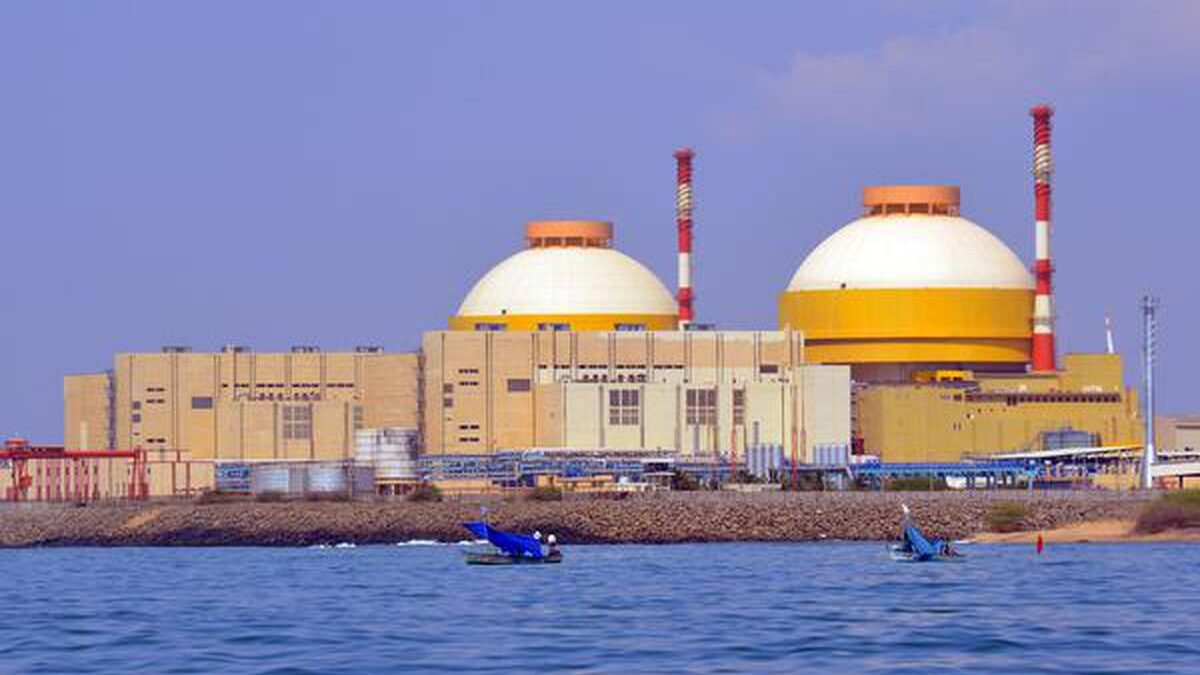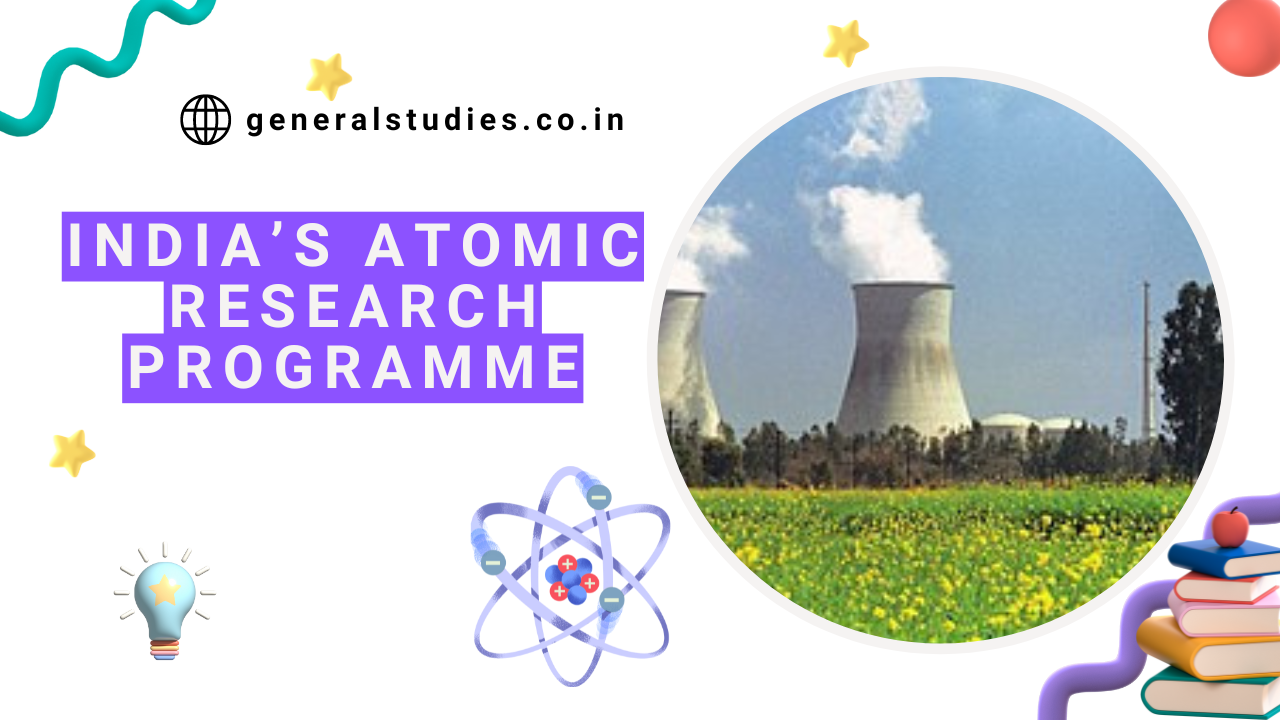Table of Contents
Introduction: Atomic Energy Programme of India
India foresaw the potential for peaceful utilization of atomic energy even when it was primarily used for military purposes globally. Dr. Homi Bhabha predicted that India would have its experts ready when nuclear energy became viable for power production. Over the last three decades, India focused on developing scientific and technological capabilities to design and execute atomic energy projects independently.
Historical Background of the Atomic Energy Programme of India
| Section | Details |
|---|---|
| Early Programme | – India’s tradition of fundamental research produced outstanding scientists like Sir C.V. Raman, S.N. Bose, and H.N. Saha. – Organized research in nuclear science began in 1945 with the establishment of the Tata Institute of Fundamental Research in Bombay. – The Atomic Energy Act was passed in 1948, focusing on the peaceful use of atomic energy. – In 1954, the Department of Atomic Energy (DAE) was established, and the Bhabha Atomic Research Centre (BARC) was set up in Trombay (eastern suburb of Mumbai). |
| Challenges in Technology Adaptation | – Developing countries often face challenges in adapting imported technology to local socio-economic conditions. – Technology transfers can hamper indigenous scientific innovation. – Many developing countries lack the necessary scientific and technical personnel and financial resources to establish their R&D centers. – India realized that establishing a cadre of scientists and engineers was crucial for introducing nuclear technology suitable for local conditions. |
| APSARA Reactor | – India’s first major project at BARC was the construction of the APSARA reactor in 1956. – APSARA was the only reactor in Asia outside the Soviet Union at the time. – The reactor and its equipment, except for the fuel elements, were designed and built in India. – The experience gained in designing and building APSARA contributed to the development of multi-disciplinary interaction at BARC. |
| CIRUS Reactor | – In 1956, India decided to build the CIRUS reactor, a 40 MW natural uranium heavy-water moderated research reactor, with Canadian collaboration. – Indian scientists were involved in all stages of the project. – India set up plants at BARC to produce nuclear-grade uranium metal and fuel elements for CIRUS. – CIRUS became critical in 1960 and continues to operate using fuel produced in Trombay and heavy water from Nangal. |
| Technological Activities (1956-66) | – India embarked on various technological activities, including uranium extraction, fuel fabrication, reactor control, radioisotope separation, and more. – All facilities had small beginnings and expanded with the growth of expertise in India. – In 1961, India began work on a reprocessing plant at BARC, which was commissioned in 1964, making India the fifth country in the world with reprocessing facilities. – The cost of the plant was less than half the estimated cost of a similar capacity plant in another country. |
| Application of Commercial Nuclear Power | – Developing countries often face challenges in adapting imported technology to local socio-economic conditions. – Technology transfers can hamper indigenous scientific innovation. – Many developing countries lack the necessary scientific and technical personnel and financial resources to establish their R&D efforts. – India realized that establishing a cadre of scientists and engineers was crucial for introducing nuclear technology suitable for local conditions. |
| Madras and Narora Projects | – The introduction of nuclear power in India began in the decade 1966-76. – Early studies indicated that nuclear power was economically viable in the western, northern, and southern regions of India, where coal transportation was challenging. – India’s uranium reserves are modest, but it has one of the largest thorium reserves. – India conceived a three-stage nuclear fuel cycle strategy, with natural uranium reactors in the first phase, followed by fast breeder reactors and eventually thorium-uranium-233 cycle reactors. – India’s first nuclear power station at Tarapur consisted of two BWR reactors and was a turnkey project by General Electric of the USA. – The Rajasthan Atomic Power Station was a collaborative venture with Canada, and subsequent projects relied increasingly on indigenous resources. |
Source: IAEA
Key Institutions

- Bhabha Atomic Research Centre (BARC):
- Established in 1954, BARC is the primary institution for nuclear research in India, located in Trombay, Maharashtra.
- It focuses on
- nuclear reactors,
- fuel cycle technologies, and other related research.
- Nuclear Power Corporation of India Limited (NPCIL): Responsible for the design, construction, and operation of nuclear power reactors in India.
- Indira Gandhi Centre for Atomic Research (IGCAR): Located in Kalpakkam, Tamil Nadu, it specializes in advanced nuclear research, particularly in fast breeder reactors.
Key Programs
- Three-Stage Nuclear Power Program: Conceptualized by Dr. Homi Bhabha, the program aims to utilize India’s vast thorium reserves.
- Stage 1: Pressurized Heavy Water Reactors (PHWRs) using natural uranium as fuel.
- Stage 2: Fast Breeder Reactors (FBRs) using plutonium.
- Stage 3: Advanced nuclear power systems to use thorium-232.
Major Achievements
- Nuclear Reactors: India operates several nuclear power reactors, contributing to the country’s energy needs. Notable reactors include Tarapur, Rajasthan, and Kudankulam.
- Pokhran Tests: Conducted in 1974 (Smiling Buddha) and 1998 (Operation Shakti), these tests marked India as a nuclear-armed state.
- Thorium Research: India is a global leader in thorium-based research, focusing on using thorium for future nuclear reactors.
Current Focus
- Energy Security: Expanding nuclear energy capacity to meet growing energy demands.
- Research and Development: Continued research in fast breeder reactors, fusion technology, and advancements in radiation therapy for medical applications.
- International Cooperation: India has agreements with several countries for civil nuclear cooperation, including the United States, Russia, France, and Japan.
Challenges
- Safety Concerns: Ensuring the safety of nuclear power plants and addressing public concerns.
- Waste Management: Developing efficient methods for managing nuclear waste.
- Resource Allocation: Balancing investment in nuclear research with other energy sources.
Future Prospects
- Thorium Utilization: Progressing towards the successful use of thorium reactors as part of India’s long-term nuclear strategy.
- Expansion of Nuclear Power Plants: Plans to increase the number of operational nuclear power plants to enhance the contribution of nuclear energy to the national grid.
